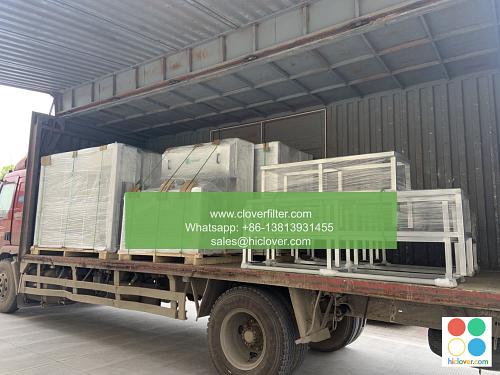The Evolution of Air Filter Technology: What’s Next?

Air filter technology has undergone significant advancements over the years, transforming the way we breathe, live, and work. From industrial air filtration to residential air purification, the evolution of air filter technology has been remarkable. In this article, we will explore the history of air filter technology, its current state, and what the future holds.
Early Beginnings: Mechanical Air Filters
The first air filters were simple mechanical devices that used fiberglass or cotton to capture particulate matter. These early air filters were not very effective and had limited filtration efficiency. However, they paved the way for the development of more advanced air filter technologies.
Electrostatic Air Filters: A New Era
The introduction of electrostatic air filters marked a significant milestone in the evolution of air filter technology. These filters used electrostatic charges to attract and capture airborne particles, including dust, pollen, and smoke. Electrostatic air filters were more effective than their mechanical counterparts and found applications in industrial air cleaning and commercial HVAC systems.
HEPA Air Filters: The Gold Standard
The development of HEPA (High Efficiency Particulate Air) filters revolutionized the air filter industry. HEPA filters are capable of capturing 99.97% of particles as small as 0.3 microns, making them the gold standard for air purification. HEPA filters are widely used in hospital ventilation systems, pharmaceutical manufacturing, and clean rooms.
Activated Carbon Air Filters: Removing Odors and Gases
Activated carbon air filters are designed to capture gases and odors from the air. These filters are often used in combination with HEPA filters to provide comprehensive air cleaning solutions. Activated carbon air filters are commonly used in kitchen ventilation systems, indoor air quality monitoring, and odor control applications.
Nanofiber Air Filters: The Future of Air Filtration
The latest advancement in air filter technology is the development of nanofiber air filters. These filters use nanotechnology to create ultra-fine fibers that can capture particles as small as 0.1 microns. Nanofiber air filters have the potential to revolutionize industrial air filtration, automotive air filtration, and residential air purification.
Application Areas: Where Air Filter Technology is Making a Difference
Air filter technology has numerous application areas, including:
* Industrial air cleaning: Air filters are used to remove particulate matter, gases, and odors from industrial processes.
* Commercial HVAC systems: Air filters are used to improve indoor air quality in commercial buildings.
* Residential air purification: Air filters are used to remove allergens, pollutants, and odors from residential air.
* Pharmaceutical manufacturing: Air filters are used to maintain clean rooms and prevent contamination.
* Hospital ventilation systems: Air filters are used to prevent the spread of infections and improve patient outcomes.
What’s Next: Emerging Trends and Technologies
The future of air filter technology is exciting and promising. Emerging trends and technologies include:
* IoT-enabled air filters: Air filters that can be controlled and monitored remotely using IoT devices.
* Biodegradable air filters: Air filters made from biodegradable materials that can reduce waste and environmental impact.
* Antimicrobial air filters: Air filters that can capture and kill microorganisms, including bacteria and viruses.
* Graphene-based air filters: Air filters that use graphene to capture particles and gases with high efficiency and selectivity.
In conclusion, the evolution of air filter technology has been remarkable, and the future holds much promise. As air filter technology continues to advance, we can expect to see improved indoor air quality, reduced environmental impact, and increased quality of life. Whether you’re looking for industrial air filtration, residential air purification, or commercial HVAC systems, there’s an air filter technology out there to meet your needs. Prompt

